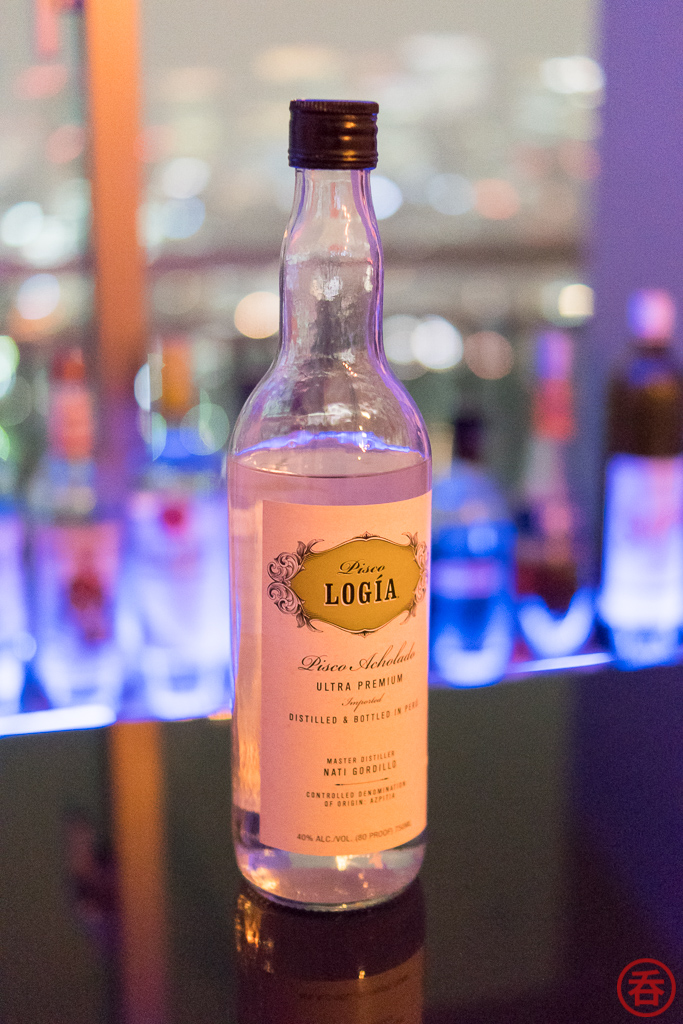Pisco is unfortunately one of the more under-represented spirits in Japan. Looking past the country’s obsession with all things whisky, the focus for most standard bars remains on the traditional cocktails with traditional bases. That’s why it’s a privilege to review PiscoLogía Acholado, imported into Japan by Okinawa-based Blue Habu Trade Group, who provided today’s bottle for review. Thanks!
3-minute Pisco Primer
Although you could call the aguardiente pisco “South America’s brandy,” that really doesn’t help to describe the flavor. Yes it is a grape-based distilled spirit, but there’s just as much regionality to it as you may taste with a mezcal. Fruity, floral, woody, tropical — there’s a lot going on, even simultaneously in one bottle, depending on what pisco you’re talking about.
The two main countries making pisco these days are Peru and Chile, though they are locked in an ongoing dispute as to whether or not it’s okay to call Chilean pisco “pisco.” For our purposes today we’re specifically looking at Peruvian Pisco, which must be made in one of five Denominations of Origin: Arequipa, Ica, Lima, Moquegua or Tacna. Of those, PiscoLogía comes from Azpitia, a small village in the Mala River Valley at the food of the Andes. The distillery sits less than 10km from the ocean but don’t expect any Islay-style brininess here: Peruvian pisco must sit for at least 3 months in glass or steel vessels that don’t change any of the properties of the spirit.
Distillers are also not allowed a second distillation, or even to use water to reduce proof for bottling. So you know what you’re drinking is exactly what came out of the still, minus foreshots and feints.
PiscoLogía Acholado
PiscoLogía Acholado is a mixture of Quebranta and Italia grapes, and depending on the vintage, Torontel grapes. It’s bottled at 40% abv. That may sound entry-level for a whisky, but keep in mind we’re working with a single-distilled undiluted spirit here — this makes it closer to an extremely strong honkaku shochu (if grapes were allowed…) in terms of the body.
The nose begins with leafy hints of fresh cut grass, but there’s also the sweetness of honey and berries. On the palate it opens up with a bit of sharp vegetative hit but you’ll quickly forget that once you work your way towards a soft mix of grape, banana, and orange. One thing that really strikes me is how long it just keeps on delivering — you could keep swirling this around all night. The finish was a tad rubbery for me but there’s also still plenty of berry and burnt banana to find.
Of course this being pisco, I had to make a pisco sour using PiscoLogía Acholado. The lime juice does a wonderful job here of bringing forward the fruity and citrus notes that we found in the palate, while the egg white gives it the texture that such a full-bodied spirit deserves. Nice!
A more simple cocktail that stuck out at me on the suggested list was the Azpitia Highball, basically a pisco & tonic, which I’ve never had before. Tequila & tonic works, so I figured, why not give it a try? I found that the bitterness of the tonic played quite well with the citrus that’s around from the get-go in the pisco.
Rating: A-
Buy from Blue Habu Trade Group (3500 yen pre-tax)
Hi there! I created and run nomunication.jp. I’ve lived in Tokyo since 2008, and I am a certified Shochu Kikisake-shi/Shochu Sommelier (焼酎唎酒師), Cocktail Professor (カクテル検定1級), and I hold Whisky Kentei Levels 3 and JW (ウイスキー検定3級・JW級). I also sit on the Executive Committees for the Tokyo Whisky & Spirits Competition and Japanese Whisky Day. Click here for more details about me and this site. Kampai!

